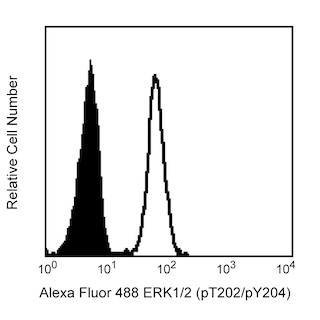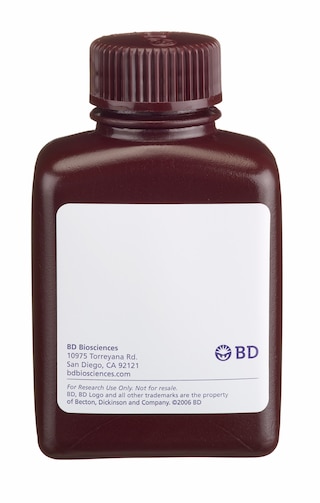-
Reagents
- Flow Cytometry Reagents
-
Western Blotting and Molecular Reagents
- Immunoassay Reagents
-
Single-Cell Multiomics Reagents
- BD® OMICS-Guard Sample Preservation Buffer
- BD® AbSeq Assay
- BD® OMICS-One Immune Profiler Protein Panel
- BD® Single-Cell Multiplexing Kit
- BD Rhapsody™ ATAC-Seq Assays
- BD Rhapsody™ Whole Transcriptome Analysis (WTA) Amplification Kit
- BD Rhapsody™ TCR/BCR Next Multiomic Assays
- BD Rhapsody™ Targeted mRNA Kits
- BD Rhapsody™ Accessory Kits
-
Functional Assays
-
Microscopy and Imaging Reagents
-
Cell Preparation and Separation Reagents
-
- BD® OMICS-Guard Sample Preservation Buffer
- BD® AbSeq Assay
- BD® OMICS-One Immune Profiler Protein Panel
- BD® Single-Cell Multiplexing Kit
- BD Rhapsody™ ATAC-Seq Assays
- BD Rhapsody™ Whole Transcriptome Analysis (WTA) Amplification Kit
- BD Rhapsody™ TCR/BCR Next Multiomic Assays
- BD Rhapsody™ Targeted mRNA Kits
- BD Rhapsody™ Accessory Kits
- United States (English)
-
Change country/language
Old Browser
This page has been recently translated and is available in French now.
Looks like you're visiting us from {countryName}.
Would you like to stay on the current country site or be switched to your country?




.png)

Flow cytometric analysis of IDH1 expression in human embryonic kidney cells. 293-F cells (ThermoFisher, Cat. No. R79007) were fixed with BD Cytofix™ Fixation Buffer (Cat. No. 554655) and permeabilized with BD Perm/Wash™ Perm/Wash Buffer (Cat. No. 554723). The cells were stained intracellularly with either PE Mouse IgG1, κ Isotype Control (Cat. No. 554680; dashed line histogram) or PE Mouse Anti-Human IDH1 antibody (Cat. No. 567019; solid line histogram) at 0.5 µg/test. The fluorescence histograms showing IDH1 expression (or Ig Isotype control staining), were derived from gated events with the forward and side light-scatter characteristics of intact cells. Flow cytometric analysis was performed using a BD LSRFortessa™ X-20 Flow Cytometer System and FlowJo™ software. Data shown on this Technical Data Sheet are not lot specific.

Flow cytometric analysis of IDH1 expression in human peripheral blood leucocytes. Human blood was fixed with Lyse/Fix Buffer (Cat. No. 558049) and permeabilized with BD Perm/Wash™ Perm/Wash Buffer (Cat. No. 554723). The blood cells were stained intracellularly with either PE Mouse IgG1, κ Isotype Control (Cat. No. 554680; left plot) or PE Mouse Anti-Human IDH1 antibody (Cat. No. 554680; right plot) at 0.5 µg/test. Pseudocolor flow-cytometric plots showing the correlated expression of IDH1 (or Ig Isotype control staining) versus side light-scatter signals were derived from gated events with the forward and side light-scatter characteristics of intact leucocyte populations. Flow cytometric analysis was performed using a BD FACSCelesta™ Flow Cytometer System and FlowJo™ software. Data shown on this Technical Data Sheet are not lot specific.
.png)

BD Pharmingen™ PE Mouse Anti-Human IDH1

BD Pharmingen™ PE Mouse Anti-Human IDH1
.png)
Regulatory Status Legend
Any use of products other than the permitted use without the express written authorization of Becton, Dickinson and Company is strictly prohibited.
Preparation And Storage
Recommended Assay Procedures
BD™ CompBeads can be used as surrogates to assess fluorescence spillover (Compensation). When fluorochrome conjugated antibodies are bound to CompBeads, they have spectral properties very similar to cells. However, for some fluorochromes there can be small differences in spectral emissions compared to cells, resulting in spillover values that differ when compared to biological controls. It is strongly recommended that when using a reagent for the first time, users compare the spillover on cell and CompBead to ensure that BD Comp beads are appropriate for your specific cellular application.
Product Notices
- Since applications vary, each investigator should titrate the reagent to obtain optimal results.
- An isotype control should be used at the same concentration as the antibody of interest.
- Caution: Sodium azide yields highly toxic hydrazoic acid under acidic conditions. Dilute azide compounds in running water before discarding to avoid accumulation of potentially explosive deposits in plumbing.
- For fluorochrome spectra and suitable instrument settings, please refer to our Multicolor Flow Cytometry web page at www.bdbiosciences.com/colors.
- Please refer to http://regdocs.bd.com to access safety data sheets (SDS).
- Please refer to www.bdbiosciences.com/us/s/resources for technical protocols.
Companion Products






The RMab-3 monoclonal antibody specifically recognizes wild type and mutant forms of isocitrate dehydrogenase 1 (IDH1). IDH1 is a NADP(+)-dependent enzyme that is found as a homodimer in the cytoplasm and peroxisomes. It catalyzes the conversion of isocitrate to alpha-ketoglutarate via a redox reaction, which is thought to be the primary mechanism that produces the NADPH that is required for cholesterol and fatty acid biosynthesis and for the generation of reduced glutathione that prevents cellular damage from reactive oxygen species. Consistent with IDH1's participation in multiple metabolic pathways, IDH1 mRNA has been detected in all normal tissues and cancers. A mutant form of IDH1 that frequently occurs in several forms of gliomas and secondary glioblastomas correlates with greater invasive behavior of gliomas. That same mutation may also contribute to leukemic transformation.

Development References (9)
-
Abbas S, Lugthart S, Kavelaars FG, et al. Acquired mutations in the genes encoding IDH1 and IDH2 both are recurrent aberrations in acute myeloid leukemia: prevalence and prognostic value.. Blood. 2010; 116(12):2122-6. (Biology). View Reference
-
Bogdanovic E. IDH1, lipid metabolism and cancer: Shedding new light on old ideas.. Biochim Biophys Acta. 2015; 1850(9):1781-5. (Biology). View Reference
-
Cairns RA, Mak TW. Oncogenic isocitrate dehydrogenase mutations: mechanisms, models, and clinical opportunities.. Cancer Discov. 2013; 3(7):730-41. (Biology). View Reference
-
Kato Y, Natsume A, Kaneko MK. A novel monoclonal antibody GMab-m1 specifically recognizes IDH1-R132G mutation.. Biochem Biophys Res Commun. 2013; 432(4):564-7. (Clone-specific: Western blot). View Reference
-
Losman JA, Looper RE, Koivunen P, et al. (R)-2-hydroxyglutarate is sufficient to promote leukemogenesis and its effects are reversible.. Science. 2013; 339(6127):1621-5. (Biology). View Reference
-
Metallo CM, Gameiro PA, Bell EL, et al. Reductive glutamine metabolism by IDH1 mediates lipogenesis under hypoxia.. Nature. 2011; 481(7381):380-4. (Biology). View Reference
-
Patil NK, Bohannon JK, Hernandez A, Patil TK, Sherwood ER. Regulation of leukocyte function by citric acid cycle intermediates.. J Leukoc Biol. 2019; 106(1):105-117. (Biology). View Reference
-
Shechter I, Dai P, Huo L, Guan G. IDH1 gene transcription is sterol regulated and activated by SREBP-1a and SREBP-2 in human hepatoma HepG2 cells: evidence that IDH1 may regulate lipogenesis in hepatic cells.. J Lipid Res. 2003; 44(11):2169-80. (Biology). View Reference
-
Takano S, Kato Y, Yamamoto T, et al. Immunohistochemical detection of IDH1 mutation, p53, and internexin as prognostic factors of glial tumors.. J Neurooncol. 2012; 108(3):361-73. (Immunogen: ELISA, Immunohistochemistry). View Reference
Please refer to Support Documents for Quality Certificates
Global - Refer to manufacturer's instructions for use and related User Manuals and Technical data sheets before using this products as described
Comparisons, where applicable, are made against older BD Technology, manual methods or are general performance claims. Comparisons are not made against non-BD technologies, unless otherwise noted.
For Research Use Only. Not for use in diagnostic or therapeutic procedures.